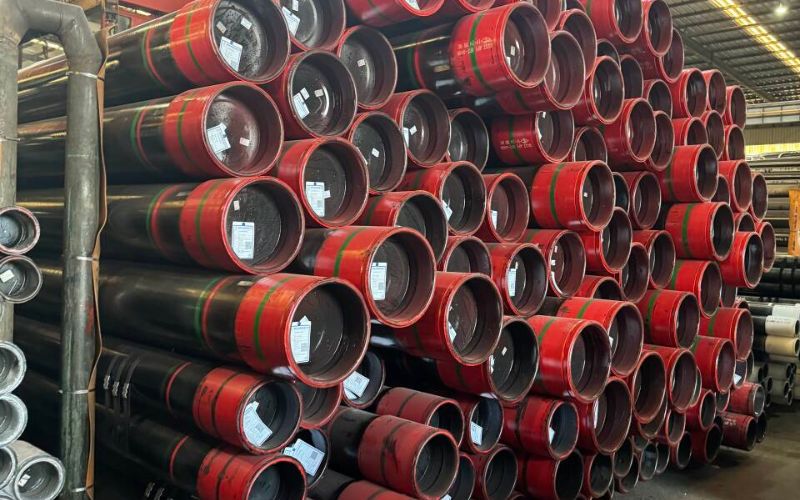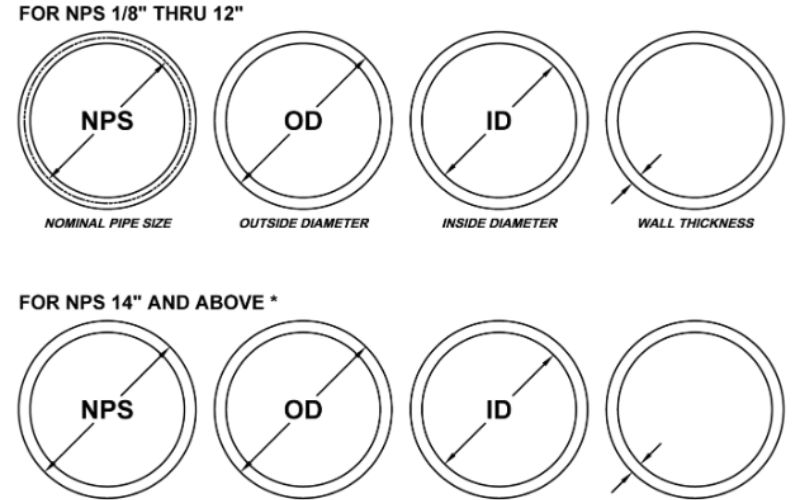Stainless metal sheets have been known to hold the epitome of various manufacturing activities, being sturdy, versatile, and trendy in appearance. They have transformed myriad applications from construction grounds to the automotive sector to high-end design projects, thanks mainly to their unique set of properties. If you’re fresh to working with stainless metal sheets or aiming to improve your skills, this guide will surely be your best resource. We will be looking at everything from their specifications and grades to selection criteria and techniques on how to use them best. After this, you will better appreciate why stainless metal sheets are the material of choice and discover ways to facilitate putting them to practical use in your projects.
Introduction to Stainless Steel Sheets
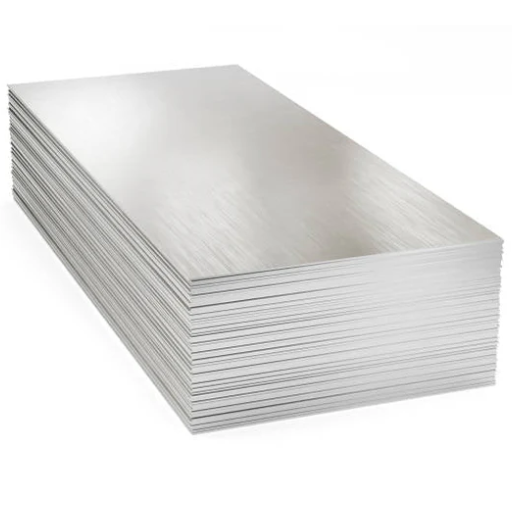
Stainless-steel sheets are thin metal sheets, flat in shape, and known for corrosion resistance, durability, and versatility. The stainless steel sheets are mostly made of iron and chromium and some other alloys to provide the necessary design against rust formation and in harsh environment conditions. They are used mainly in industries like construction, manufacturing, and design concerning various applications requiring strength and durability. Their sleek look and low maintenance ability are usable in either practical or aesthetic application, from kitchen appliances to architectural projects.
What is Stainless Steel?
Stainless steel is a mixture consisting largely of iron, chromium, and differing quantities of carbon, nickel, and other constituents. Its primary characteristic is corrosion resistance imparted by chromium, which produces a very thin oxide layer on the surface whenever it is exposed to oxygen. Since this layer is self-healing, the metal will last throughout its useful life and the property is retained, even in highly unfriendly environments such as extreme humidity, industrial gases, or very saline conditions.
Over 150 grades and variations of stainless steel exist but they are typically grouped into five categories: austenitic, ferritic, martensitic, duplex, and precipitation hardenable stainless steels. For instance, austenitic stainless steels constitute more than 70 percent of global stainless steel production because of their excellent corrosion resistance properties, non-magnetic nature, and good weldability.
According to statistical figures, the global stainless steel market was estimated at roughly USD 126 billion in 2022 and is expected to register a CAGR of 5.5% between 2023 and 2030. Construction, automotive, medical device manufacturing, and food processing are the main industries that drive the demand for stainless steel because of its strength, cleanliness, and look.
In essence, stainless steel is a material that is immensely strengthful and versatile and hence finds application in a variety of interconnected industrial sectors.
Overview of Stainless Steel Sheets
Stainless steel sheets can be regarded well for their durability, versatility, and corrosion resistance. These sheets come in different grades, from which 304 and 316 respond to the different industrial requirements. Grade 304, which generally has an admirable corrosion resistance property, finds use mostly for kitchen appliances, in food processing, and in chemical industries. Grade 316, incorporating molybdenum, gives better resistance against distant chemical environments and can be used for marine and medical purpose.
In these stainless steel sheets, the thickness could range from 0.4mm to 6mm, which can further serve their applications in construction, automotive styling, and industrial machinery. For instance, 1.2mm stainless steel sheets are in great demand in architectural applications because they strike a perfect balance between strength, weight, and aesthetic appeal. Further, fast technological advancements have aided the manufacturing process to provide better finishes with a number of finish options such as brushed, mirrored, matt, etc., to suit all kinds of designs.
Market reports say the stainless steel industry is expected to witness splendid growth on account of increasing developments related to construction activities and demand for sustainable materials. Particularly, the energy industry turned to stainless steel sheets for solar and wind energy systems, thus emphasizing their relevance in renewable energy transition. With recyclability rates above 80%, stainless steel sheets are not just a matter of functionality but also of environmentally conscious engineering and design.
Types of Stainless Steel Sheets
Stainless steel sheets include types like austenitic, ferritic, martensitic, duplex, and precipitation-hardened, each offering unique properties for various applications.
|
Parameter |
Details |
|---|---|
|
Austenitic |
High corrosion resistance |
|
Ferritic |
Magnetic, cost-effective |
|
Martensitic |
High strength, brittle |
|
Duplex |
Strong, corrosion-resistant |
|
Precipitation-Hard. |
Extremely strong, durable |
Properties of 304 Stainless Steel Sheet
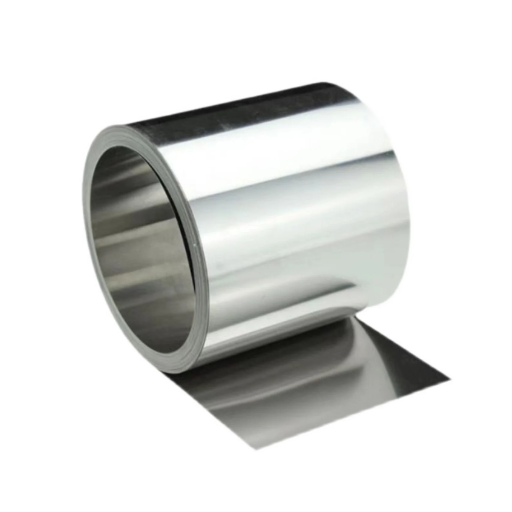
304 stainless steel sheets find tremendous preferences for their indestructible quality, corrosion-proof shape, and utility. Some of the major characteristics are as follows:
- Corrosion Resistance: Extremely resistant to rust and corrosion, making it suitable for operations exposed to moisture and chemicals.
- Strength and Durability: The tensile strength offered is quite robust, and it also resists wear and tear.
- Ease of Fabrication: Easy welding, shaping, and machining processes make these stainless steel types ideal for multiple uses.
- Aesthetic Finish: Gives a very much polished look that is included for visible installation surfaces and decorative purposes.
- Hygiene and Non-Reactivity: Non-porous surface suited for food-related and medical use.
This proper combination of features, in view of function as well as beauty, renders 304 stainless steel an industrial standard for multiple sectors.
Physical Properties
304 stainless steel cooperates with a plethora of good physical properties to acquire huge industrial acceptance:
- Density: 8.00 g/cm³, excellent durability without being ponderous.
- Melting Point: Approximately 1,400–1,450°C, so it will hold up in temperature-based operations.
- Thermal Conductivity: 16.2 W/m·K at 100°C, to transfer heat adequately and fairly for heat exchanger applications.
- Coefficient of Thermal Expansion: 17.2 µm/m·K (at 20-100°C), complementing structural elongation with temperature changes.
- Electrical Resistivity: 0.72 µΩ·m at 20°C, moderately electrically conductive, more than enough for most non-conductive applications.
- Tensile Strength: Approximately 505 MPa, allowing for optimum weight-handling capabilities.
- Yield Strength: In the vicinity of 215 MPa, wherein depressing under stress considerably without deformation.
- Hardness: On the Brinell hardness scale denoting average workability at 123 HB.
These properties cause 304 stainless steel to be an all-purpose metal for many processes requiring high-strength corrosion resistance and heat acceptance.
Mechanical Properties
304 stainless steel serves a wide spectrum of mechanical properties and, therefore, is highly used in diverse applications. It includes tensile strength with an average measure of about 505 MPa, given alongside yield strength and hardness, making it durable and resistant to breaking under tread. The elongation to break is about 40 percent due to its high ductility, making it essential for manufacturing processes like bending and deep drawing.
The material has a modulus of elasticity of about 193 GPa, which is well balanced between stiffness and flexibility. Furthermore, it shows good performance in impact resistance, making it very reliable in applications that are subjected to dynamic or variable loads, at around 200 J of impact toughness at room temperature.
These mechanical characteristics, combined with corrosion resistance, thermal performance, and formability, distinguish 304 stainless steel as the material of choice among many industries, including construction, automotive, and food processing.
Corrosion Resistance
304 stainless steel is known worldwide, primarily for its resistance to corrosion; hence it has been chosen in various fields. To its utmost advantage, this material will withstand oxidation and break down with time if exposed to a hostile environment. Now, this resistance comes from the high chromium content, approximately 18-20%, which on interacting with the air creates a passive oxide layer on the surface. This passive oxide layer blocks oxygen or moisture from entering the steel, thereby saving rust or corrosion.
Generally, 304 stainless steel finds application in conditions when moisture, acidic substances, or chemicals are present. When exposed to the saltwater environment, if chloride concentration does not exceed 200 ppm, 304 stainless steel will retain its strength for long periods. For environments with strong chloride concentrations, stainless steel 316 is often considered more appropriate due to its molybdenum rich nature, although 304 is quite effective in moderately corrosive media.
Also, 304 stainless steel is susceptible to corrosions across a wide pH range; it does not function well in strongly acidic and alkaline environments but is shown to have a very low corrosion rate in environments containing mild acids including nitric acid and is therefore widely used for chemical process equipment. It also has good resistance to intergranular corrosion once welded, ensuring that 304 stainless steel will maintain integrity and service-life through the pressures of manufacturing and construction work.
Given its lot of characteristics in resisting corrosion, it is utilized in various industries such as construction, food processing, and pharmaceuticals, where frequent exposure to cleaning agents or corrosive media is unavoidable. One practical instance includes its use in kitchen appliances and food-grade containers that require utmost hygiene and resistance to chemical sanitizers. When appropriately maintained and used under the recommended operating conditions, 304 stainless steel will provide dependable service at reasonable costs and hence shall be the chosen material where durability against corrosion is required.
Applications of Stainless Steel Sheets
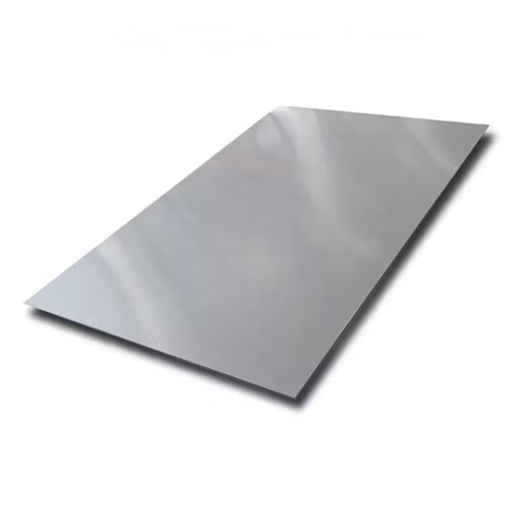
Stainless steel sheets are widely used in many industries for their longevity, corrosion resistance, and flexibility. Some key applications are as follows:
- Construction: For contemporary buildings, stainless steel is used in architectural cladding, roofing, and structural components.
- Food industry: It is indispensable for hygienic articles such as kitchen appliances, countertops, and food processing equipment.
- Medical: Surgical instruments, medical equipment, and hospital furniture resist contamination.
- Automobile making: Applied in exhaust systems, trims, and body panels capable of withstanding aging.
- Energy: Used in renewable energy systems, such as solar panels and water heaters, and oil and gas parts.
Stainless steel sheets offer dependable solutions for situations that require strength, cleanliness, and efficiency.
Use in Food Processing
Food processing machinery in stainless steel, as they put it, is some of the best stainless steel in the business, given that it never rusts, can be easily cleaned, and is very durable. It is used in the fabrication of plant equipment such as mixers, conveyors, tanks, and storage containers. The use of stainless steel violates no standards under health or safety, since its non-porous surface discourages the accumulation of bacteria and pathogens.
In the food processing industry, 70% of equipment is made of stainless steel, which really underlines its supremacy in the sector. Stainless steels of grades 304 and 316 are mostly preferred since they resist attack from acidic and alkaline media that food products carry. It shows that stainless steel components greatly curb the risk of contamination in food processing, thus leading to safer and better quality realization of food. Additionally, stainless steels can hold great temperature extremes that make them equally suitable for high-temperature cooking environments as well as low-temperature cold storage.
In food processing, stainless steel would be sustainable with respect to longevity and recyclability, thus meeting the pressure for eco-friendly measures being mounted on the industry. Stainless steel, therefore, continues to top the list of favorite materials across the industry, keeping in view the tougher hygiene standards and the requirement of stainless food-grade solution.
Wall Panels and Architectural Applications
Because of its great durability and special beauty, stainless steel wall paneling finds its way into industrial and commercial production works. Providing for a seamless and contemporary finish, the installation of these wall panels is widespread among commercial kitchens, medical establishments, and high-end public places. Easy to maintain and resisting corrosion, these would be favorite choices for areas with strict hygiene standards.
From the architectural perspective, stainless steel builds sharp designs with reflective surfaces that boost natural light while giving a sense of openness. It is popularly known to be used in facades and cladding, bringing structural strength along with mere visual elegance. In addition to structural worth, newer fabrication techniques allow for finishes such as brushed, patterned, or etched to add physical texture or visual depth.
The market gained prominence after the worldwide emphasis on green and energy-efficient buildings. A majority of these wall panels feature an outstanding recycled content of about 70% or more and are fully recyclable at the time of their disposal, thus being an integral part of green building certification programs such as LEED. Also, their superior durability eliminates the need for regular replacements down the line, ensuring less waste.
With the advent of modern coating technologies to achieve anti-fingerprint and antimicrobial properties, stainless steel wall panels are increasingly finding uses in a growing variety of different environments. These coatings render the material more suitable for high-touch locations, extra hygiene benefits besides it never compromising in terms of base strength or aesthetics. With their certified performance and maximum adaptability, stainless steel wall panels and architectural applications continue to be the image of modern design and function.
Industrial Uses and Custom Fabrication
Stainless steel wall panels have gained prominence in industrial applications due to their durability, ease of maintenance, and adaptability to various environments. Recent advancements highlight their widespread use in cleanrooms, laboratories, and food processing facilities, where hygiene and corrosion resistance are critical. For instance, in the pharmaceutical industry, stainless steel panels meet stringent regulatory requirements by offering seamless, non-porous surfaces that are easy to sterilize.
Custom fabrication techniques have also revolutionized possibilities for industrial applications. Laser cutting, for example, allows for precision designs tailored to specific architectural or functional needs, while advanced welding and finishing processes enhance both structural integrity and aesthetics. Additionally, data underscores the increasing demand for stainless steel panels in energy sectors such as oil, gas, and renewable energy infrastructure, where their resistance to extreme temperatures and environmental stressors makes them indispensable.
These innovations reflect a growing trend toward sustainable and efficient materials in industrial settings, cementing stainless steel’s versatility and enduring relevance across industries.
Fabrication Techniques for Stainless Steel
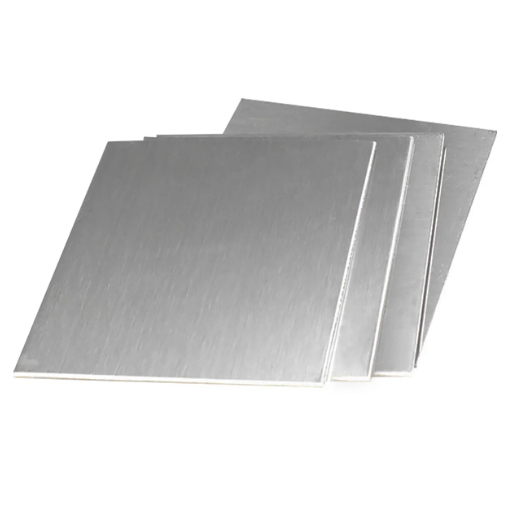
Fabricating stainless steel involves several key techniques to achieve the desired shape, strength, and functionality. These techniques include:
- Cutting: Common methods like shearing, laser cutting, and waterjet cutting are used to achieve precise shapes without compromising the material’s integrity.
- Forming: Processes such as bending, folding, and forging allow stainless steel to be shaped into various forms while maintaining its strength.
- Welding: Welding stainless steel requires careful heat control to prevent warping or compromising its corrosion resistance. Techniques like TIG (Tungsten Inert Gas) and MIG (Metal Inert Gas) welding are widely used.
- Machining: Using specialized tools, stainless steel can be drilled, milled, and turned to create complex components.
- Finishing: Surface treatments such as polishing and brushing enhance corrosion resistance and aesthetics for specific applications.
These methods ensure stainless steel is versatile and customizable for a wide range of industrial and commercial uses.
Cutting and Shaping Stainless Steel
Cutting and shaping stainless steel efficiently requires a combination of precision, technology, and appropriate tools to maintain its structural integrity and achieve desired outcomes. Modern techniques include laser cutting, plasma cutting, waterjet cutting, and traditional mechanical cutting methods.
- Laser Cutting: Using high-powered lasers, this method offers unparalleled accuracy, intricate detailing, and minimal heat distortion. It is ideal for thin to medium-thick stainless steel sheets and is widely used in industries requiring precise cuts, such as aerospace and medical sectors. Research indicates that laser cutting can achieve tolerances as tight as ±0.1 mm, depending on the material’s thickness.
- Plasma Cutting: This process utilizes ionized gas (plasma) to cut through thicker stainless steel sheets effectively. While less precise than laser cutting, it is cost-efficient and suitable for heavy-duty applications. Plasma cutting can handle stainless steel thicknesses up to 3 inches, making it favorable in construction and shipbuilding industries.
- Waterjet Cutting: Known for its versatility, waterjet cutting employs high-pressure water mixed with abrasive materials to cut stainless steel without generating heat. This “cold cutting” technique prevents thermal distortion and retains the steel’s original properties. It is often used in applications where maintaining material integrity is paramount.
- Mechanical Cutting: Traditional methods like sawing, shearing, and punching remain viable for specific projects. These techniques are better suited for stainless steel sheets with simpler shapes or standard thicknesses. For instance, advanced band saws can cut stainless steel with accuracy rates of ±0.25 mm depending on the setup and tool sharpness.
Selecting the proper cutting method depends on several factors, including the material’s thickness, required precision, and project budget. Advances in cutting technologies continue to improve productivity while reducing material waste and processing times, which are vital considerations for modern industrial and commercial applications.
Annealing Processes
Annealing is a critical heat treatment process used to alter the physical and chemical properties of materials such as metals, glass, and polymers. The primary aim of annealing is to enhance material performance by reducing internal stresses, increasing ductility, and improving machinability.
The process generally involves three key stages:
- Heating: The material is heated to a specific temperature known as the recrystallization temperature. This temperature varies depending on the material. For example, for stainless steel, it typically ranges between 1,020°F to 1,200°F (550°C to 649°C).
- Holding (soaking): The material is maintained at this temperature for a designated period, allowing the internal structures to homogenize. The duration depends on factors like material thickness and desired properties, often measured in hours for industrial applications.
- Controlled Cooling: After soaking, the material is cooled at a predetermined rate, usually in a furnace or a controlled environment, to prevent additional stress or distortion. Metals such as copper and steel require slow cooling, while materials like glass are cooled in a lehr to prevent cracking.
A significant benefit of annealing is the improvement in material softness, making it easier to fabricate products like sheet metal or automotive parts. Data indicates that annealing can increase ductility by up to 30%, depending on the base metal and treatment conditions. Additionally, annealing reduces brittleness, minimizes microcracks in complex components, and enhances corrosion resistance in materials like stainless steel.
Advanced industrial annealing technologies now include precise monitoring systems for temperature and gas environments. These systems optimize treatment efficiency, reducing energy consumption by up to 15% compared to conventional techniques. By implementing modern annealing methods, manufacturers can achieve consistent quality, reduce production costs, and enhance sustainability.
Polishing and Finishing Options
Polishing and finishing are crucial steps in material processing, directly impacting the functionality, durability, and aesthetics of a product. Several methods are available depending on the application:
1. Mechanical Polishing
The oldest and most commonly used method involves the abrasive action of materials and their associated tools to smooth and improve a surface. According to the literature, mechanical polishing can reduce surface roughness to as low as Ra 0.2 micrometers, which applies to components needing heavy high precision polishing, i.e., surgical instruments and aerospace components.
2. Electropolishing
Being an electrochemical treatment, electropolishing removes a very thin layer of material to reduce surface micro-roughness, enhance corrosion resistance, and impart a mirror finish. Increases the strength of materials up to about 30% depending on their inherent characteristics/variations in corrosion rate with fatigue. It provides a longer life for products, especially equipment used for the manufacture of surgical instruments.
3. Buffing
In this process, soft tools are used together with polishing compounds to produce a glossy and brilliantly reflective surface. Buffing is a very important process in industries like automotive and consumer goods where it lends a certain feel and classy look to the product.
4. Coatings and Chemical Treatments
These remedies optimize aspects of appearance and further add another layer of functionality to the material being perused. Other processes include passivation, which not only increases corrosion resistance but leaves a clean and bright surface finish. It has been proven that stainless steel after passivation resists formation of rust 50% better as compared to an untreated surface.
5. Specialized Finishes
Such finishes find application in bead blasting, satin finishing, and anodizing of niche requirements for architecture and electronics. For architectural applications, bead blasting provides a uniform matt texture for a modern and sleek design, while anodizing creates a tough oxide layer that is both protective and decorative in nature.
With proper selection of polishing and finishing options, the manufacturers can accomplish all major objectives related to improved durability of the product, less maintenance on the product, and increased marketability. The industry is now looking at an advanced finishing system that already uses automations and machine learning for uniformity and efficiency, to meet the needs of a rapidly changing industry.
Choosing the Right Stainless Steel Sheet
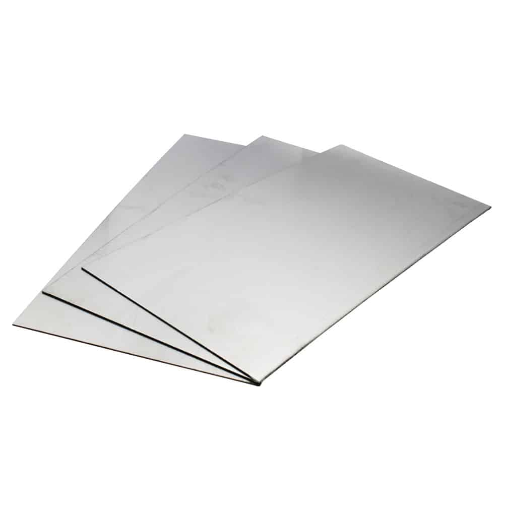
- Application Requirements: Determine how the sheet will be used. Stainless steel grades like 304 and 316 are widely applicable although the 316 has the better corrosion resistance needed for harsher environments as in marine or chemical applications.
- Environmental Conditions: Consider moisture, chemicals, extreme temperatures. For extreme environments, opt for higher-grade steel (e.g., 316 or duplex grade).
- Finish and Aesthetics: Choose a surface finish depending on the functional and aesthetic requirements; for instance, use a brushed finish on something that’s going to be visible, whereas a mill finish might be fine for a structural purpose.
- Strength and Durability: Consider mechanical strength properties such as tensile strength to ensure that the sheet meets performance standards for use.
- Budget: A compromise to be struck between cost and performance is to pay for aesthetic effects and specialty grades only when necessary.
By working with these factors and the specific needs of your project, the stainless steel sheet chosen will guarantee proper reliability and functionality.
Understanding Thickness Options
When considering thickness options, I look at how the sheet thickness affects its strength, weight, and suitability for the application. Thicker sheets will normally offer greater load-carrying capability and durability but can also be heavier and perhaps harder to handle, depending on the nature of the work. I try to keep in mind the application requirements, such as structural demands and ease of handling, to identify the thickness giving the best trade-off between performance and practicality. This then provides the best fit for the overall aim of the work project.
Comparing 304 and 316 Stainless Steel
304 stainless steel is cost-effective and versatile, while 316 offers superior corrosion resistance due to added molybdenum, making it ideal for marine and chemical environments.
| Parameter | 304 Steel | 316 Steel |
|---|---|---|
|
Corrosion |
Moderate resistance |
High resistance |
|
Strength |
Moderate |
High |
|
Cost |
Lower |
Higher |
|
Applications |
General use |
Marine, chemical |
|
Key Element |
No molybdenum |
2-3% molybdenum |
|
Heat Resistance |
Slightly higher |
Slightly lower |
Finding a Reliable Supplier
My main emphasis while looking for the right supplier is research, due diligence, and perfection. I tend to prefer suppliers with proven track records of quality, consistency with the delivery lead times. I tend to check to see if they are certified by any organization or are well regarded in the industry by the customers reviews. They have to match the requirements of the project in specific ways, e.g., materials or options that can be configured, or prices that are competitive. Communication should be open and good, and I also follow up to confirm that they can provide support and that they are willing to do so.
Reference Sources
- Authors: Valmir Dias Luiz et al.
- Publication Date: April 14, 2023
- Journal: Coatings
- Citation Token: (Luiz et al., 2023)
- Key Findings:
- Investigated the friction properties of AISI 430 stainless steel under various contact conditions.
- Conducted three tribological tests: pin-on-disk, bending under tension, and strip-tension tests.
- Found that the coefficients of friction, wear, and lubricant efficiency were significantly influenced by surface roughness and the type of friction test.
- Methodology:
- Performed tribological tests using counter samples of hard metal with different surface finishes.
- Analyzed the influence of texture and relative elongation on formability.
2. “Experimental Formability and Finite Element Studies on AISI310 Austenitic Stainless Steel”
- Authors: K. Praveen et al.
- Publication Date: 2023
- Journal: E3S Web of Conferences
- Citation Token: (K.Praveen et al., 2023)
- Key Findings:
- Investigated the formability of AISI 310 stainless steel under varying temperatures.
- Conducted Nakazima tests to evaluate formability and constructed forming limit diagrams.
- Found that formability increased with spindle speed and decreased with vertical step down and feed rate.
- Methodology:
- Conducted tensile tests at different temperatures to gather mechanical properties.
- Used finite element simulations to compare experimental results.
- Authors: S. Saha et al.
- Publication Date: March 1, 2023
- Journal: Journal of Materials Engineering and Performance
- Citation Token: (Saha et al., 2015, pp. 1125–1139)
- Key Findings:
- Analyzed the effects of gas metal arc welding on the microstructure and mechanical properties of AISI 304 stainless steel.
- Found that welding significantly altered the microstructure and mechanical properties, affecting formability.
- Methodology:
- Conducted microstructural analysis and mechanical testing to evaluate the effects of welding.
Frequently Asked Questions (FAQs)
What are the typical uses of stainless steel sheet metal?
Stainless steel sheets are used in a variety of applications due to their corrosion-resistant properties. Common uses include kitchen appliances, automotive parts, and architectural designs. They are favored for their aesthetic appeal and durability, making them ideal for marine environments where exposure to saltwater can be detrimental. Additionally, high-quality stainless steel products like type 304 are often utilized in food processing equipment due to their hygienic qualities. For specific projects, you can contact us today to learn more about suitable options.
How does a brushed finish affect stainless steel plates?
A brushed finish on stainless steel plates not only enhances their appearance but also provides a level of scratch resistance. The textured surface can help minimize the visibility of fingerprints and smudges, making maintenance easier. This finish is popular in both residential and commercial settings, often seen in stainless steel products like countertops and wall panels. Furthermore, the brushed texture can create a unique aesthetic that complements various design styles. For those looking for a stylish yet functional option, consider 4 brushed stainless sheets.
Is 430 stainless steel suitable for corrosive environments?
While 430 stainless steel offers some resistance to corrosion, it is not as effective as other grades like 304 or 316L in highly corrosive environments. It is commonly used in indoor applications and environments with low levels of moisture. However, for marine environments or areas exposed to harsh chemicals, using higher-quality stainless steel options is recommended. Understanding the specific conditions your stainless steel products will face is essential for long-term durability. Always consider the environment when selecting your stainless steel sheet metal.
What are the advantages of using aluminum sheets over stainless steel?
Aluminum sheets are lighter than stainless steel sheets, making them easier to handle and install. They also offer excellent corrosion resistance, especially in marine environments, and are often more affordable. However, stainless steel products typically provide better strength and durability, particularly in applications requiring high structural integrity. Depending on the project requirements, aluminum sheets may be suitable for decorative applications while stainless steel sheets are preferred for heavy-duty uses. Therefore, evaluating the specific needs of your project is crucial.
What is the significance of 304L and 316L stainless steel grades?
The grades 304L and 316L refer to low carbon versions of type 304 and type 316 stainless steel, respectively. These grades are designed to minimize carbide precipitation during welding, making them ideal for applications in corrosive environments. 304L is widely used in food processing and oil and gas industries, while 316L is preferred for marine applications due to its superior resistance to chlorides. Choosing the right stainless steel sheet metal grade is essential for ensuring longevity and performance in specific environments. Always consult with a materials expert for recommendations based on your needs.



